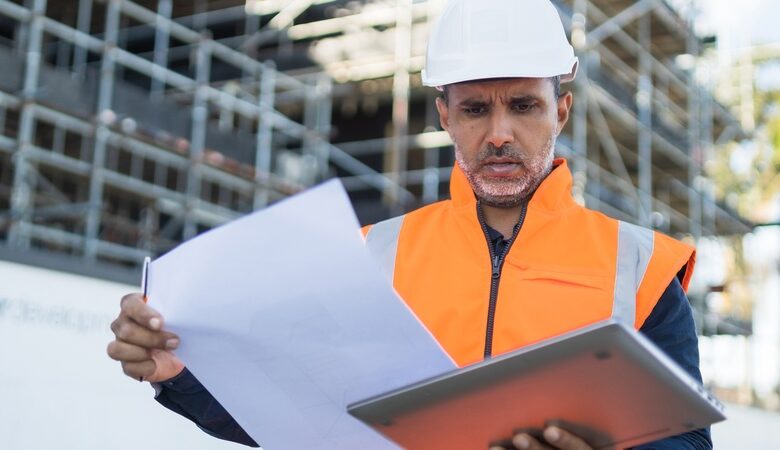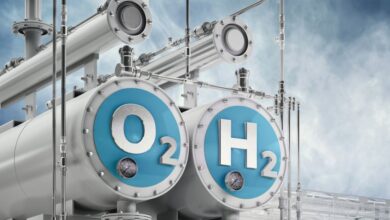Harnessing the power of AI and machine learning to accelerate AEC projects

Arnab Ghosh, global sales engineering director at Accuris, a provider of technology solutions to optimise workflows, looks at how harnessing artificial intelligence (AI) and machine learning (ML) technologies can help accelerate the design and construction of large infrastructure projects.
The architecture, engineering and construction (AEC) industries have long been characterised by formal processes and rigorous methodologies, honed over decades of informed engineering practices.
When it comes to the design and planning of large-scale critical infrastructure projects – such as airports, bridges and ports – the sheer volume of factors to consider is astronomical. From identifying and adhering to stringent regulatory standards to navigating variables like climate change, traffic implications and sourcing highly specialised materials, the complexity involved is staggering. It’s no wonder that decade-long timelines have become the norm for the construction of major transport hubs.
However, a seismic event earlier this year sent shockwaves through the AEC sector, prompting a re-evaluation of traditional approaches. In March 2024, the catastrophic collapse of Baltimore’s Francis Scott Key Bridge, a once widely utilised and vital transport link, left the city reeling from significant economic losses and facing the daunting task of reconstruction.
Engineering and construction experts anticipate that, factoring in the intricate web of regulations and other macro considerations, the rebuild effort could take up to 15 years. With a deep sense of urgency to restore this critical infrastructure, the prolonged timeline underscores the pressing need for transformative solutions that can expedite the design and construction processes.
The Key Bridge collapse has cast a spotlight on the inherent inefficiencies of existing methodologies, sparking a discourse on how emerging technologies, particularly AI and ML, could hold the key to driving unprecedented efficiencies in the AEC domain.
AI: Unlocking new frontiers of possibility
The recent surge in generative AI tools such as ChatGPT and Jasper.ai has captivated organisations worldwide as they contemplate how these cutting-edge technologies could transform business operations, saving time, capital and other valuable resources. While the construction and engineering sectors have often been branded as “slow movers” when it comes to digital modernisation, they are poised to be among the biggest beneficiaries of AI and ML capabilities.
These advanced technologies thrive on large datasets, where they can evaluate existing information, condense it and provide actionable recommendations. AEC teams are ideal candidates for leveraging AI and ML, given their extensive repositories of historical data, encompassing project execution documents, design blueprints, best practices and more. The possibilities for streamlining processes across the entire project lifecycle – from design and construction to maintenance – are vast.
According to Tech Clarity, engineers waste a third of their time on non-value-added work and 20% of their time is spent working with outdated information. With critical infrastructure projects, the need to wade through a labyrinth of regulatory standards, which are frequently updated, adds a huge layer of complexity.
AI and ML algorithms can reap significant time savings for engineering teams. AI-based knowledge search and discovery platforms can sift through vast troves of standards, codes and regulations, and provide critical engineering insights and synthesised lists of relevant standards tailored to each project’s specific requirements.
Moreover, generative AI design algorithms can be leveraged to generate higher-quality design concepts at an accelerated pace. By injecting previous blueprints and plans into generative AI models and embedding project-specific parameters such as soil characteristics, wind load values, weight capacities and seismic protection, the model can swiftly identify potential development approaches based on the analysis of historical data.
Additionally, training ML models on past data can support the prediction of long-term inspection and maintenance costs for structures and other assets, enabling proactive resource allocation by regions and municipalities.
The advantages of AI extend to the planning and scheduling of construction activities as well. For highly specialised projects like the Key Bridge rebuild, engineers can spend months scouring for appropriate vendors and unique materials. AI algorithms can streamline this process by rapidly cataloguing suitable suppliers and goods, delivering the required materials in a fraction of the traditional procurement timeline.
AI-enabled project planning and scheduling algorithms can also leverage historical data on past project plans, budgets and schedules to optimise construction sequences, resource allocation and logistics. This data-driven approach leads to more efficient project timelines, reduced costs and minimised waste. Furthermore, AI models trained on historical project data can identify potential risks, bottlenecks and areas for improvement, enabling proactive risk mitigation strategies.
Ensuring successful AI/ML adoption in AEC
While the potential benefits of AI and ML in the AEC sector are undeniable, realising these advantages hinges on a few critical factors. First and foremost, the effectiveness of AI and ML algorithms is directly proportional to the quality, accuracy and timeliness of the data used to train these models. Strong data governance, encompassing policies and guardrails that ensure proper data quality throughout the process, is paramount to avoid design errors, regulatory inaccuracies and potential data misinterpretations.
In all projects that involve emerging technologies, education and stakeholder engagement are crucial. Promoting understanding, trust and acceptance of these advanced tools among engineering teams and other stakeholders will ensure that organisations can fully capitalise on the benefits they offer. The use of explainable AI techniques and interpretable ML models, which provide insights into decision-making processes and enable better human understanding, is critical to ensuring that project deliverables are trustworthy and reliable.
Security is also paramount. In an era where cyber-security threats are ever-present, particularly in the realm of critical infrastructure, data privacy and security must be top priorities when leveraging AI and ML solutions. With nation-state actors increasingly launching sophisticated cyber attacks, there is a heightened risk of malicious actors attempting to penetrate AI software to gather intelligence on foreign infrastructure projects.
Consequently, organisations must carefully evaluate the data they upload to AI tools, implementing robust cybersecurity measures to prevent breaches that could compromise public safety and national security. While AI remains largely unregulated at the federal level, proactive organisations must establish their own rigorous guardrails to mitigate these risks.
A transformative future for AEC
AI and ML technologies can reshape and transform the design and construction mechanisms underpinning AEC projects. By harnessing the power of these advanced tools, engineers can build higher-quality designs on expedited timelines, avoid wasted efforts on manually triaging regulatory standards, and accurately pinpoint appropriate materials for their complex designs. However, it is essential to recognise that AI and ML will not entirely displace human expertise; rather, they will serve as powerful enablers, augmenting and enhancing the capabilities of engineering teams.
To maximise the success of AI and ML adoption in the AEC sector, a holistic approach is necessary. Ensuring the validity and quality of source data through robust data governance practices, combined with effective cyber-security measures and stakeholder engagement, will be pivotal in mitigating risks and unlocking the full transformative potential of these cutting-edge technologies.
As the AEC industry grapples with the urgent need to accelerate critical infrastructure projects like the Key Bridge rebuild, the time to embrace AI and ML innovation is now. By leveraging these advanced capabilities judiciously and with a well-defined strategy, engineering and construction teams can usher in a new era of efficiency, innovation and resilience, shaping the infrastructure of tomorrow while addressing the pressing challenges of today.



